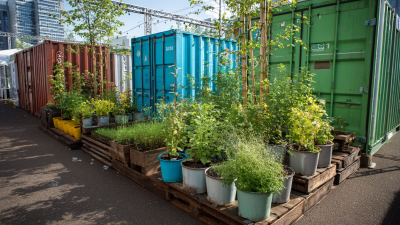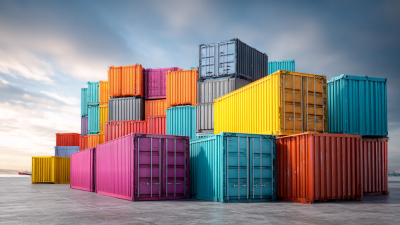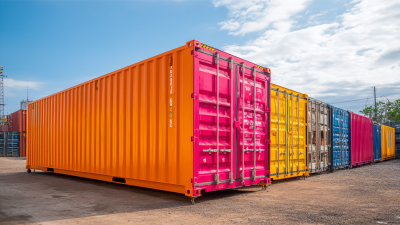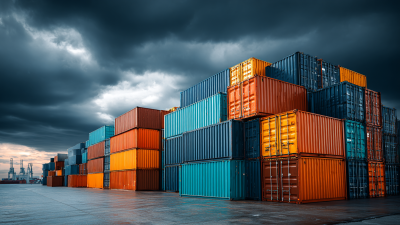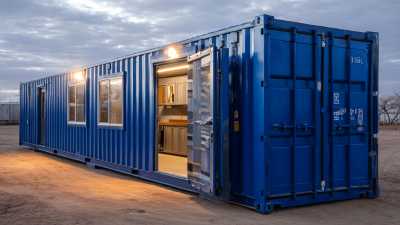In the rapidly evolving logistics and shipping industry, the demand for effective storage solutions continues to grow. According to a report by MarketsandMarkets, the global market for shipping containers is projected to reach USD 9.96 billion by 2025, illustrating the increasing reliance on innovative storage shipping containers to meet diverse transportation and storage needs. These versatile containers are not only essential for international trade but also play a pivotal role in various sectors, from construction to warehousing.
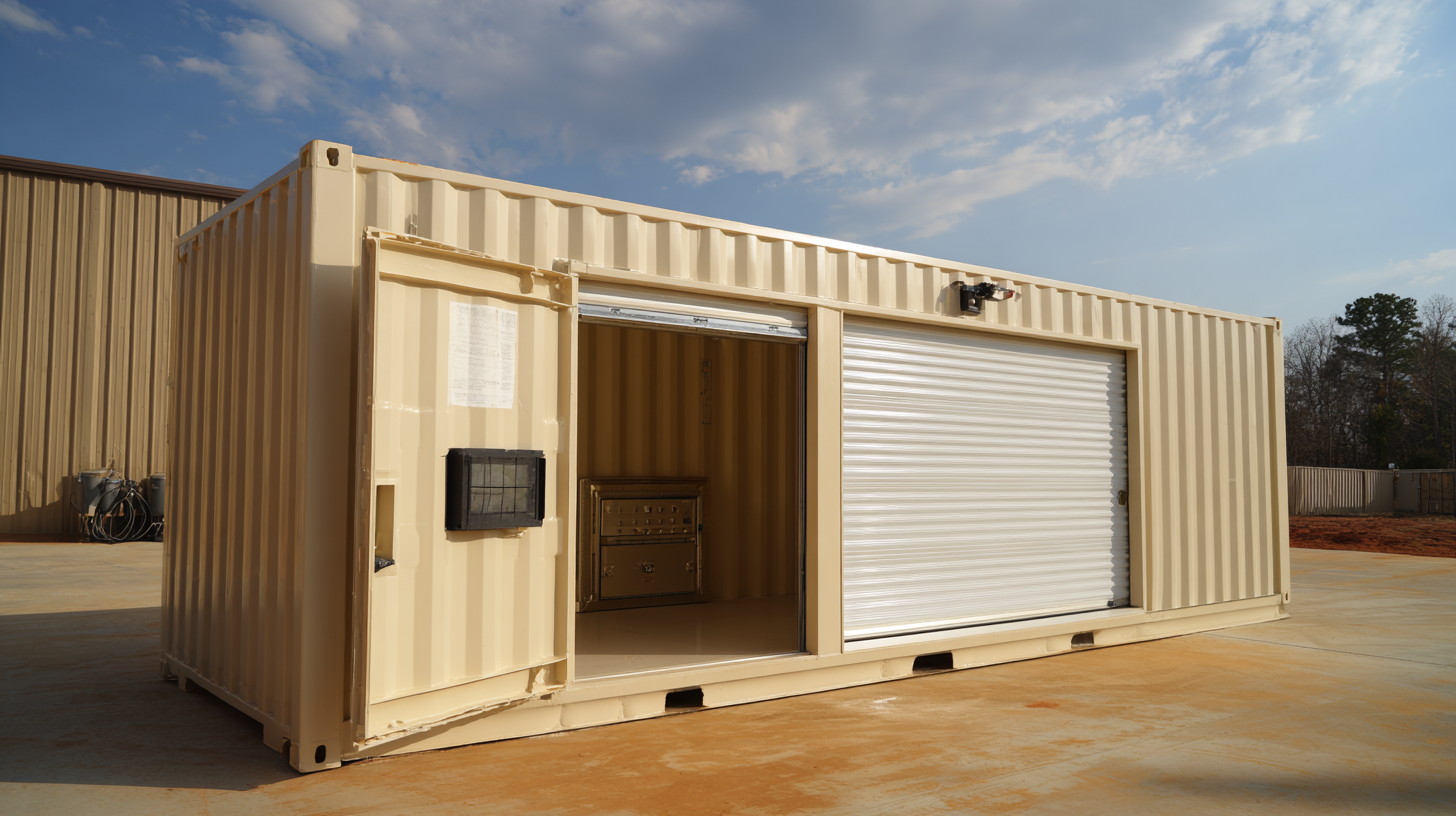
As businesses seek to optimize their supply chains, understanding the top types of storage shipping containers available is more important than ever. The diverse range of options—from standard dry containers to specialized refrigerated units—allows companies to tailor their storage solutions to specific requirements. In fact, a survey by the Container Owners Association revealed that nearly 70% of logistics managers consider the flexibility of container usage as a critical factor in their operational strategies. This article delves into the top five digital storage shipping containers for 2025, highlighting their unique features and benefits, ensuring that businesses are well-equipped to navigate the complexities of modern storage logistics.
The rise of smart containers is revolutionizing the logistics and shipping industry by merging advanced technology with traditional storage solutions. According to a report by MarketsandMarkets, the smart container market is expected to grow from $1.1 billion in 2020 to $3.5 billion by 2025, reflecting a compound annual growth rate (CAGR) of 26.4%. This surge is driven by the ongoing need for efficient inventory management and real-time tracking of goods. Smart containers equipped with IoT devices can provide valuable data on temperature, humidity, and location, ensuring optimal conditions for sensitive products during shipping.
Incorporating technology into storage solutions not only enhances operational efficiency but also boosts safety and compliance. For instance, smart containers can help monitor hazardous materials, providing alerts if containment is breached or if temperature thresholds are exceeded. This innovation is pivotal for industries such as pharmaceuticals and perishables, where maintaining strict conditions is critical.
**Tips for Choosing Smart Containers:**
- Look for containers with real-time tracking features to minimize loss and improve transparency in your supply chain.
- Consider those equipped with sensors for temperature and humidity monitoring to safeguard sensitive materials.
- Evaluate the integration capabilities of containers with existing logistics software to streamline data management.
This chart illustrates the growth in popularity of various types of smart storage containers projected for 2025. Each type's adoption rate reflects the integration of technology and innovative storage solutions tailored to diverse needs.
When selecting the perfect storage shipping container, understanding the various sizes and designs available is crucial. Containers come in a range of dimensions, with the most common options being 20-foot and 40-foot units. The choice between these sizes largely depends on the volume of goods you need to store or transport. While a 20-foot container might suffice for personal moves or small business needs, larger operations may require a 40-foot container to accommodate extensive inventory or equipment.

In addition to size, the design and features of storage containers also play a vital role in decision-making. Standard containers are typically weather-proof and secure, making them suitable for outdoor storage. However, for specialized requirements, options such as refrigerated containers or containers with custom shelving are available. These variations cater to specific needs, whether you're dealing with perishable goods or simply wish to maximize space efficiency. By carefully considering both size and design, you can ensure that your container meets your storage requirements effectively.
When it comes to shipping containers, customization is key to optimizing their functionality for various needs. No two businesses are alike, and tailoring storage containers to meet specific requirements can significantly enhance efficiency and usability. From adjustable shelving to climate control systems, a wide range of customization options allows users to create a storage solution that fits their unique operational needs.
**Tips:** Consider the items you plan to store when choosing customization features. If you're storing sensitive materials, opting for insulated containers with humidity control can protect your goods from environmental damage. For those needing easier access, installing roll-up doors or side entrances can facilitate loading and unloading, minimizing hassle and downtime.
Another important aspect is the aesthetic appeal of your storage containers. Depending on your business, customized branding or color schemes can enhance your company's image while providing necessary functional benefits. Adding windows for natural light or installing secure locks can also elevate both the utility and security of your containers. By assessing your specific demands, you can develop a solution that combines practicality with personalized flair.
| Container Type | Dimensions (ft) | Capacity (cu ft) | Weight Limit (lbs) | Customization Options |
|---|---|---|---|---|
| Standard Dry Container | 20 x 8 x 8.5 | 1,172 | 48,000 | Ventilation, Locking Mechanisms |
| Refrigerated Container | 40 x 8 x 9.5 | 2,390 | 60,000 | Temperature Control, Shelving |
| Open Top Container | 20 x 8 x 8.5 | 1,172 | 48,000 | Lifting Gear, Tarpaulin Cover |
| Flat Rack Container | 40 x 8 x 8.5 | 2,400 | 60,000 | Removable Ends, Side Rails |
| High Cube Container | 40 x 8 x 9.5 | 2,694 | 60,000 | Extra Height, Ventilation |
The growing emphasis on sustainability has significantly influenced the shipping container industry, leading to innovative eco-friendly practices and features that cater to environmentally conscious consumers. Manufacturers are now focusing on using recycled materials in the production of shipping containers, which reduces waste and minimizes the carbon footprint associated with new construction. Additionally, many containers are designed to be modular, allowing for efficient transport and versatile uses that extend their life cycle, reducing the need for new resources.
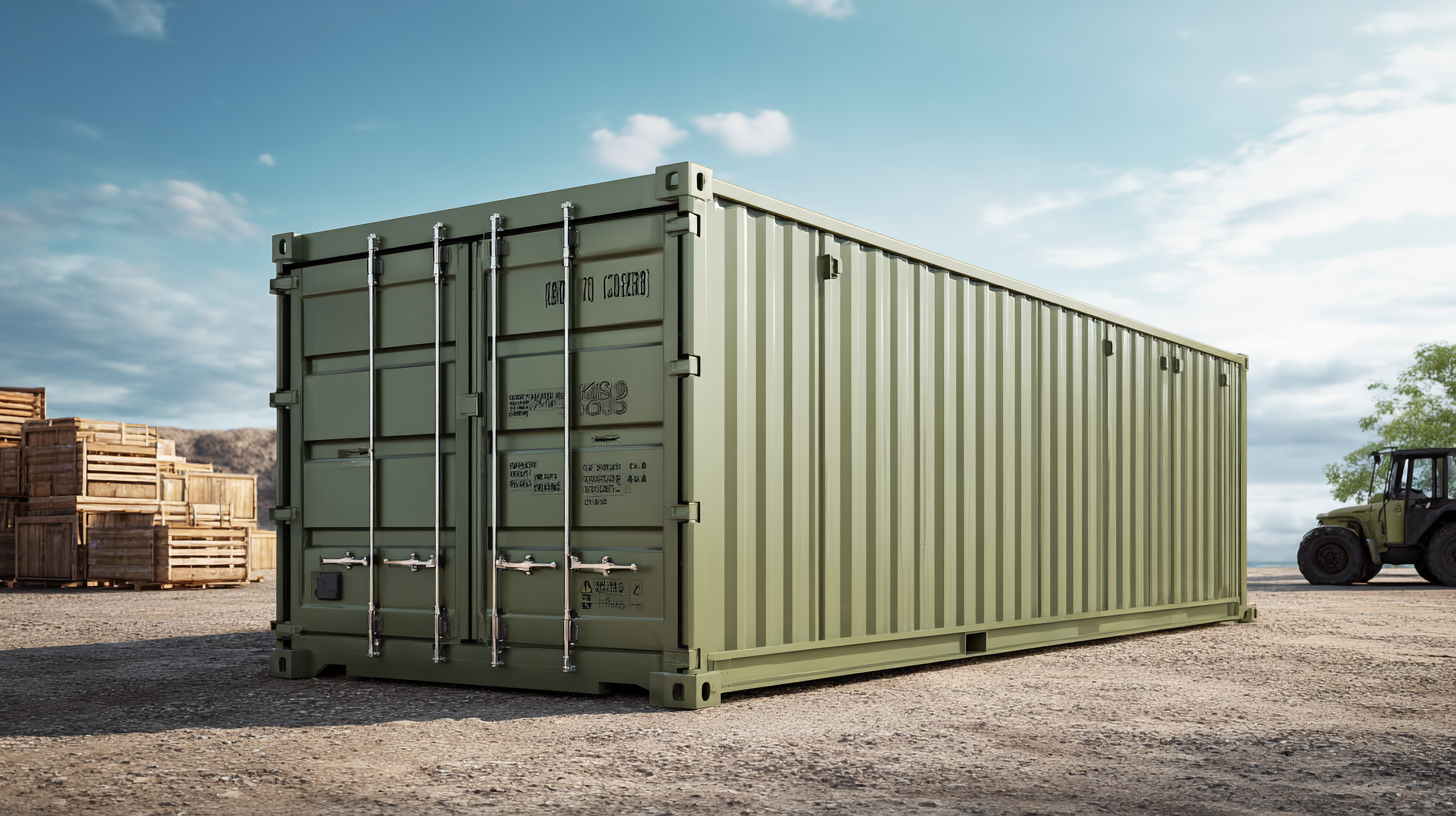
Beyond materials, the adoption of renewable energy applications is growing within the market. Some shipping containers come equipped with solar panels, enabling them to harness clean energy for various functions. This not only reduces reliance on fossil fuels but also provides a practical solution for off-grid storage options. Furthermore, manufacturers are implementing efficient logistics strategies that optimize routes and reduce emissions during transportation, embodied in a broader commitment to sustainable practices. By incorporating these eco-friendly features, shipping containers are becoming a vital component in achieving a greener future, catering to businesses and individuals who prioritize sustainability in their operations.
The landscape of digital storage shipping containers is evolving rapidly, offering various options to cater to diverse needs. According to a recent report by MarketsandMarkets, the global digital storage market is projected to reach $100 billion by 2025, highlighting the increasing reliance on efficient storage solutions. Among the top contenders are cloud storage systems, which provide scalable solutions with a low entry cost, appealing to small and medium-sized enterprises. Research from Gartner indicates that organizations adopting cloud solutions can reduce their IT expenses by 30% to 50%, emphasizing the financial advantage of cloud-based containers.
On the other hand, hybrid storage systems are gaining traction due to their flexibility and enhanced security features. These systems combine on-premises and cloud technologies, allowing businesses to keep sensitive data securely while benefiting from the scalability of the cloud. A survey by TechRepublic found that 71% of IT leaders prefer hybrid solutions for their versatility in managing workloads, further validating their growing popularity. Additionally, digital shipping containers that offer automated backup and real-time data analytics contribute to improved operational efficiency, positioning them as indispensable tools for modern businesses.
